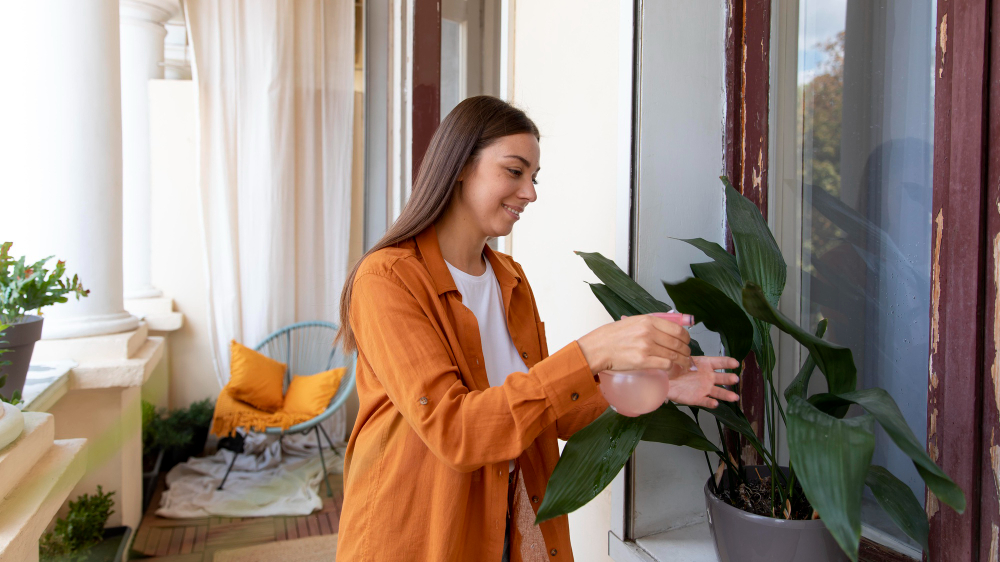How to Create a Sustainable Living Space

Creating a sustainable living space involves making small, impactful changes that can significantly improve environmental impact and quality of life. This guide outlines key steps to transform any home into a sustainable haven.
Starting with Awareness
The first step towards creating a sustainable living space is awareness. Educating oneself about the environmental impact of daily habits and home environments is crucial. Understanding that every small change counts can motivate actionable steps towards sustainability.
Energy Efficiency: Reducing Consumption
Focusing on energy efficiency is one of the most impactful changes. Switching to energy-efficient LED bulbs, which consume less power and last longer, is a good start. Installing a programmable thermostat can help manage heating and cooling more efficiently, reducing energy consumption and costs.
Tips:
Replace old appliances with Energy Star-rated models.
Use smart power strips to prevent phantom energy drain from electronics.
Seal windows and doors to improve insulation and reduce heating/cooling needs.
Water Conservation: Saving Every Drop
Water conservation is essential for preserving this precious resource. Installing low-flow showerheads and faucets can significantly reduce water usage without compromising performance. Fixing leaks promptly and using water-efficient appliances also contribute to water conservation.
Tips:
Collect rainwater for gardening and outdoor cleaning.
Install dual-flush toilets to reduce water waste.
Choose native plants for landscaping, which require less water.
Sustainable Materials: Choosing Eco-Friendly Options
Incorporating sustainable materials into a home is a key step. Opting for furniture made from reclaimed wood and other eco-friendly materials can make a significant difference. When renovating, choosing non-toxic paints and finishes improves indoor air quality and reduces environmental impact.
Tips:
Use bamboo or cork flooring as sustainable alternatives to hardwood.
Look for furniture made from recycled or upcycled materials.
Choose natural fiber rugs and textiles, such as wool, cotton, or jute.
Waste Reduction: Embracing Minimalism
Adopting a minimalist approach helps reduce waste and clutter. Decluttering space and donating items no longer needed is a good start. Implementing a recycling system and composting kitchen scraps can significantly reduce waste sent to landfills.
Tips:
Practice mindful purchasing: buy only what is needed.
Repurpose and upcycle items instead of discarding them.
Use reusable bags, containers, and bottles to minimize single-use plastics.
Indoor Plants: Bringing Nature Indoors
Introducing indoor plants enhances the aesthetics of a home and improves indoor air quality. Plants like spider plants, snake plants, and peace lilies are great at filtering toxins and adding a touch of greenery to any space.
Tips:
Choose low-maintenance plants for beginners.
Group plants together to create microenvironments that retain moisture.
Use natural fertilizers and organic potting soil.
Sustainable Cleaning: Using Natural Products
Switching to natural cleaning products makes homes safer and more environmentally friendly. Replacing harsh chemical cleaners with homemade solutions using vinegar, baking soda, and essential oils is effective and non-toxic.
Tips:
Make an all-purpose cleaner with vinegar and water.
Use essential oils like tea tree or lavender for their antibacterial properties.
Opt for reusable cleaning cloths instead of disposable ones.
Renewable Energy: Harnessing Natural Power
Installing solar panels can significantly reduce electricity bills and reliance on non-renewable energy sources. Although it requires an initial investment, the long-term benefits are substantial.
Tips:
Explore government incentives and rebates for renewable energy installations.
Consider solar water heaters or small wind turbines if solar panels aren’t feasible.
Use solar-powered outdoor lighting for gardens and pathways.
Conclusion: The Joy of Sustainable Living
Creating a sustainable living space is a transformative journey. Each step towards sustainability reduces environmental impact and enhances quality of life. The sense of accomplishment from making eco-friendly choices is incredibly rewarding.
Recommending the Sustainable Path
For those looking to create a more sustainable living space, starting with small, manageable changes is key. Educating oneself, staying motivated, and enjoying the process can lead to a haven of sustainability. Together, these efforts can make a significant difference for the planet and future generations. Happy sustainable living!
Related Posts

Investing in Dubai: Why Now is the Best Time for Real Estate
Transforming My Smile in Albania: A Dental Journey with Sky Dental Albania, a hidden gem in the Balkans, has seen

Regaining My Hair and Confidence: A Hair Restoration Journey with Nouvelle Clinique in Albania
Regaining My Hair and Confidence: A Hair Restoration Journey with Nouvelle Clinique in Albania When I started considering traveling abroad
